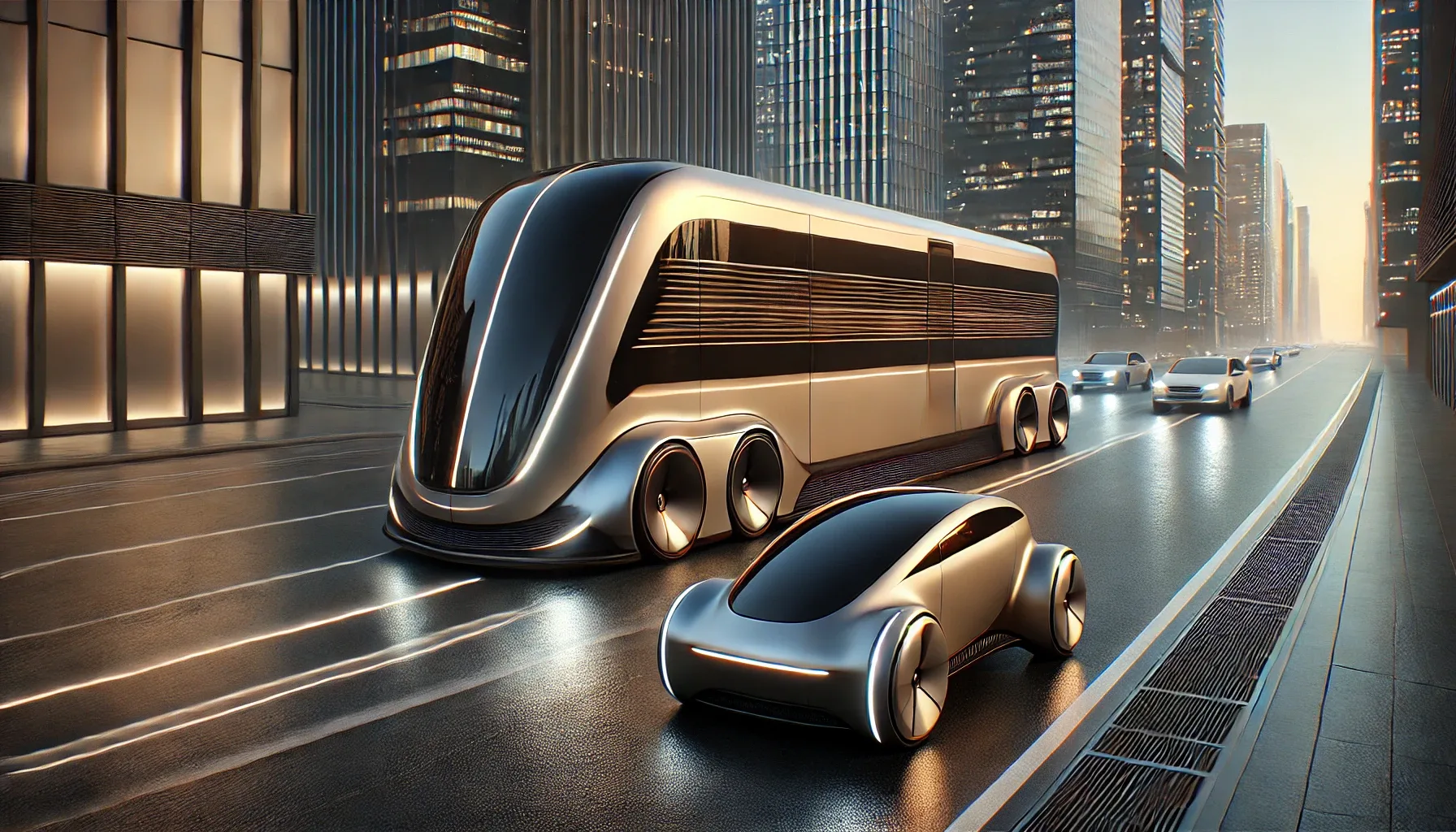The world of transportation is transforming rapidly, with AI at the forefront of these changes. AI systems are increasingly embedded in transportation technologies, impacting everything from road safety to urban mobility. As cities become more congested and environmental concerns grow, AI-driven solutions present new opportunities for efficient, sustainable, and personalized transportation experiences. This article explores the evolving role of AI in transportation, touching on areas such as autonomous vehicles, predictive maintenance, traffic management, and the future of sustainable mobility.
AI-Powered Autonomous Vehicles: Redefining Driverless Mobility
Autonomous vehicles (AVs) have long been a focus of AI’s applications in transportation. These vehicles rely on AI algorithms to process data from sensors, cameras, and other devices, allowing them to make real-time decisions on the road. The development of AVs signifies a major shift toward safer and more efficient road systems, with benefits extending beyond the automotive industry.
How AI Makes Autonomous Driving Possible
For autonomous vehicles to operate without human intervention, AI systems must analyze a vast amount of data instantly. Machine learning algorithms help AVs interpret their surroundings, recognize objects, and understand traffic patterns. Advanced AI models are trained to predict the actions of pedestrians and other drivers, improving the vehicle’s ability to avoid accidents.
The adoption of AI in AVs also supports enhanced safety features, such as automatic emergency braking and lane-keeping assistance. These systems reduce the risk of human error, which remains a primary cause of accidents worldwide. As AV technology advances, we can expect safer roads and reduced traffic congestion.
AI and Predictive Maintenance: Enhancing Efficiency and Safety
Predictive maintenance is another crucial area where AI has shown immense promise. In traditional maintenance systems, vehicle servicing happens at predetermined intervals, whether or not repairs are necessary. With AI-driven predictive maintenance, however, sensors collect data on vehicle components, identifying issues before they cause breakdowns.
Advantages of Predictive Maintenance in Transportation
AI algorithms analyze this data to predict component failures, allowing operators to address issues proactively. This approach reduces downtime and lowers repair costs, improving the reliability of transportation systems. Public transportation operators, freight companies, and airlines use predictive maintenance to ensure safe, efficient travel while minimizing service disruptions.
Predictive maintenance not only benefits individual vehicles but also has implications for entire fleets. By monitoring the health of multiple vehicles in real-time, companies can manage maintenance schedules efficiently, extending the life of their assets and keeping service costs down. This application of AI is expected to drive further adoption across both public and private transportation sectors.
Traffic Management with AI: Reducing Congestion and Emissions
As urban populations grow, cities face the challenge of managing traffic congestion and reducing pollution. AI-based traffic management systems provide a powerful solution to these issues, optimizing the flow of vehicles and improving overall urban mobility. By analyzing data from various sources—including traffic cameras, sensors, and GPS devices—AI can help authorities make data-driven decisions.
Real-Time Traffic Optimization
AI-driven traffic management systems can adjust traffic signals, reroute vehicles, and even communicate with autonomous vehicles to minimize congestion. For instance, AI systems can prioritize emergency vehicles by adjusting traffic lights to clear pathways. This capability not only enhances public safety but also reduces emissions by cutting idle time in traffic.
Moreover, AI-driven traffic prediction models help authorities plan infrastructure projects and develop long-term transportation strategies. With the ability to forecast traffic patterns, cities can make informed decisions on road expansion, public transport routes, and other infrastructure investments.
The Role of AI in Sustainable Transportation
One of the most significant impacts of AI in transportation lies in its potential to reduce carbon emissions and promote sustainability. AI-powered systems can optimize fuel consumption, support electric vehicle (EV) adoption, and encourage shared mobility solutions. As environmental concerns become more pressing, sustainable transportation options are gaining momentum.
AI and Electric Vehicles
Electric vehicles play a crucial role in reducing transportation-related emissions, and AI can enhance their efficiency. Smart charging stations use AI to manage energy distribution, ensuring that EVs charge at times when energy demand is low. AI algorithms also help EV manufacturers design more efficient batteries, extending driving ranges and reducing charging times.
Shared Mobility and Ride-Sharing
AI is also central to the development of shared mobility solutions. Ride-sharing platforms leverage AI algorithms to match riders with drivers, optimize routes, and predict demand. This approach reduces the number of vehicles on the road, decreasing traffic congestion and lowering emissions. As AI technology advances, shared mobility solutions will become even more efficient and widely adopted.
Hyperloop and AI-Driven Rail Systems: Future Visions for High-Speed Travel
AI is also transforming high-speed travel with innovations like the Hyperloop and AI-driven rail systems. These modes of transportation aim to offer faster, safer, and more environmentally friendly alternatives to traditional travel.
Hyperloop: AI in High-Speed Transit
The Hyperloop is an ambitious transportation concept that envisions passenger pods traveling at high speeds through vacuum-sealed tubes. AI systems play a key role in the design, safety, and operational efficiency of Hyperloop networks. From monitoring structural integrity to optimizing routes, AI ensures that Hyperloop systems remain safe and energy-efficient.
AI in Rail Transportation
Rail systems are also undergoing transformations with AI integration. AI algorithms analyze track conditions, predict maintenance needs, and optimize train schedules to reduce delays. In countries where high-speed rail is a popular mode of travel, AI-based systems enhance safety by detecting potential hazards and alerting operators. These advancements make rail travel a more appealing alternative to traditional car or air travel.
AI in Aviation: Smarter Skies and Safer Flights
The aviation industry is no stranger to AI advancements. Airlines and aviation authorities are implementing AI solutions to streamline operations, improve safety, and enhance customer experiences.
AI for Flight Optimization
AI-driven systems in aviation help optimize flight paths, reducing fuel consumption and minimizing delays. By analyzing real-time data on weather conditions, air traffic, and fuel efficiency, AI can recommend the most efficient routes for pilots. This approach saves costs and reduces the environmental impact of air travel, making flights more sustainable.
Enhancing Passenger Experience with AI
AI is also transforming the passenger experience, from automated check-ins to personalized in-flight services. Chatbots, for example, assist travelers with queries and booking changes, while AI-based systems help airlines manage overbooking and improve customer satisfaction.
The Ethical and Regulatory Challenges of AI in Transportation
While AI offers many advantages in transportation, its adoption raises ethical and regulatory challenges. Autonomous vehicles, for example, bring up questions about liability in case of accidents. Governments and regulatory bodies must develop frameworks to ensure AI systems are safe, transparent, and accountable.
Data Privacy and Security Concerns
AI-driven transportation systems rely heavily on data, from real-time traffic information to personal travel patterns. Ensuring the privacy and security of this data is crucial. Cybersecurity threats pose significant risks, particularly in autonomous vehicles and interconnected traffic systems. Regulatory frameworks must address these concerns, establishing guidelines to protect users and maintain public trust.
Balancing Innovation with Public Safety
Regulatory authorities face the challenge of balancing innovation with public safety. As AI-powered vehicles and systems become more common, governments must implement testing and certification procedures to prevent accidents. Clear regulations also give companies the confidence to invest in AI solutions, knowing they comply with industry standards.
Conclusion: A New Era of Intelligent Transportation
The future of transportation lies in AI’s ability to create smarter, safer, and more sustainable mobility options. From autonomous vehicles to intelligent traffic management, AI is set to redefine how people and goods move around the world. These advancements promise significant benefits for urban environments, road safety, and environmental sustainability.
However, realizing the full potential of AI in transportation will require collaboration between technology developers, government regulators, and the public. By addressing ethical and regulatory challenges, society can pave the way for a transportation system that enhances both convenience and sustainability. AI is not just a tool; it is the driving force that will shape the future of mobility.




